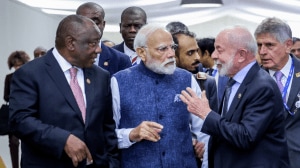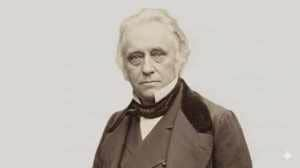A failure in design?
John Galliano,British fashion designer and the former chief designer of Christian Dior,was always good at shocking people. Too good,as it turned out.
In the last two months,the editor of French Vogue has resigned; the president of Yves Saint Laurent said she will leave her dream job to run the vanity label of Reed Krakoff,the Coach creative director,whose one dream is apparently to be successful. Gucci Group cut its chief executive loose. The first anniversary,on Feb.ruary 11,of Alexander McQueens suicide brought up another loss,another memory. And then,John Galliano self-destructed in a liquored-up I love Hitler rant.
One thing is for sure: Diors chief executive,Sidney Toledano,and his boss,Bernard Arnault,the chairman of LVMH Moët Hennessy Louis Vuitton,had to begin dismissal procedures against Galliano. They couldnt tolerate the public hating by Galliano,however out of character his defenders said it was for him. A sensible millionaire designer would have jumped into his chauffeured car and gone to his boss and pleaded insanity,whereupon he would have been given an all-expense-paid trip to rehab.
But thats just it: Galliano is not a sensible man,any more than fashion chiefs are missionaries. Last Friday,when Dior suspended him,many fashion writers suspected that the company was seizing an opportunity to fire him after 15 years on the job. Though he could still dazzle with haute couture,Gallianos own eccentric turn-outs at the end of shows were often all editors talked about. As it is,Galliano did not contact Dior after the incident more than ten days ago,nor over the succeeding weekend,said a company executive. But the lack of communication between the house and its star designer at such a crucial moment points to deeper strains.
In a way,luxury groups like LVMH are reaping what they sowed in the mid-nineties,when they hired supremely talented designers like Galliano,McQueen and Marc Jacobs (for Louis Vuitton) to energise old labels. Not only was Galliano seriously gifted,with technical skills and a romantic sensibility that suited Diors femininity,he brought to Dior a spot-on sense of vision. And he had an outsize personality,a mixture of a fiery temperament and devil-may-care London,that people could relate to.
Galliano was a controversial choice for Dior when,in 1996,Arnault moved him from Givenchy. Even though Dior had become comically stiff and pretentious,the French took it seriously. Who was this English punk with braids? What did he know about couture? I remember going to the Dior ateliers,in 2000,and casually asking the woman who ran the drapery workrooms which of Diors designers she liked best: Marc Bohan,Gianfranco Ferré or Galliano.
She hesitated,then said: Monsieur Galliano. He changed my eye.
Initially,Toledano was alarmed by some of Gallianos ideas: the slashed and turned-upside-down garments that appeared in the Matrix collection,in 1999,at Versailles,and the controversial show inspired by Paris tramps and in its Lady Di handbagswhile Galliano was doing his best to destroy all that on the runway. I remember running into Toledano and Arnault in 1999 or so,and telling them I didnt understand what they were trying to do with the labels style.
Just wait, Arnault said. Youll see. It will all come together.
And it did. In a matter of a year or so,beginning with the saddle bag,hip-hop logo denim,and new ads,created by Galliano with the photographer Nick Knight,Dior acquired a hot,coherent image. But increasingly one had the feeling that Galliano was indulged in ways that went beyond the normalthe driver,the bodyguard,the research trips,the vacations,the teams of assistantsand might have caused even the steadiest soul to lose touch with reality.
Certainly the demand on designers at big houses to produce multiple collections every year has taken both its creative and personal toll.
Its not as if John didnt have assistants doing the work,finding fabrics, the Paris executive told me. He just had to supply the vision.
But what was that vision in the last years? Dior wanted more commercial clothes. And isnt there something horribly detrimental in separating a creative spirit from the actual mechanics of making clothes? Its no wonder that young designers now question the model of big luxury houses and admire the slow-clothes method of Azzedine Alaïa,who still makes his patterns himself,or even Giorgio Armani,who works all the time.
In one way or another,these whip-lashing events feel like a repudiation of certain beliefs. But the sadness and sense of waste is undeniable.CATHY HORYN








- 01
- 02
- 03
- 04
- 05























